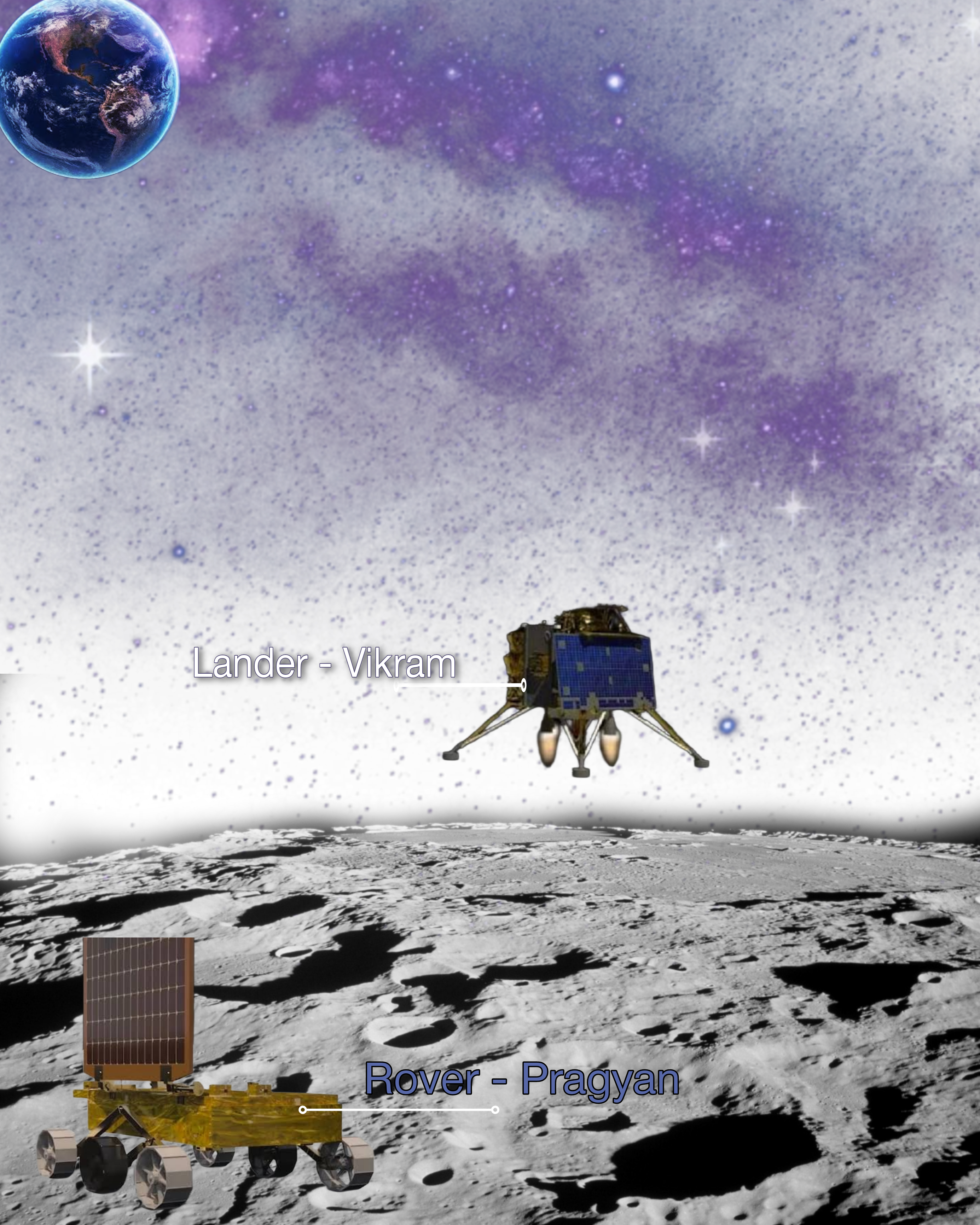What Our Chandrayaan-3 Pragyan Found on Moon ? ICE, WATER OR OXYGEN
After our 1st article of Chandrayaan-3 mission Complete details,
Here we do advanced research What our Country Rover do , found on MOON , every detail we we provide from our side then
If you want to first Know Everything About CHANDRAYAN ALL MISSION 1,2,3, go and get it.
After chandrayan 3 lands on South pole Rover is roming on moon and click images what they found for us. You know that after failing of chandrayan 2 ,its third lunar exploration mission of India under the Chandrayaan programme of the Indian Space Research Organisation (ISRO). Chandrayan-3 was launched on 14 July 2023 and successfully landed near the south pole on 23 August 2023. CHANDRAYAN-3 is moving with pack of a lander name as Vikram and a rover name as Pragyan, which are similar to our Chandrayaan-2 mission which is failed by somecase. The main objectives of Chandrayaan-3 are to demonstrate India's capability to soft-land on the Moon and to explore the MOON land or if any chance to get life expectancy on it.
According to ISRO, Pragyan is exploring on Lunar from Chandrayaan-3's successfully and sending images.
Latest report of 30 August 2023 has Pragyan has found OXYGEN type things and data to our ISRO scientist.
- **Water ice and volatiles** : Pragyan rover used its alpha particle X-ray spectrometer (APXS) and laser-induced breakdown spectroscope (LIBS) to measure the moon elemental composition of rocks and soil samples near the landing site.
- The rover detected traces of water ice and other volatiles, such as carbon dioxide, ammonia, and methane, in some of the permanently shadowed areas. These findings confirm the presence of water ice and other resources that could be useful for future lunar exploration and life expectancy on moon.
- **Lunar quakes and seismic activity** : Vikram lander used its instrument for lunar seismic activity (ILSA) to record any vibrations or tremors on the lunar surface. The lander has recorder several moonQuakes, ranging from magnitude 1 to 3, during its operation. These quakes could be caused by tidal forces, thermal expansion, meteorite impacts, or tectonic movements. These findings provide insights into the internal structure and dynamics of the Moon.
- **Lunar surface temperature and thermal properties** : Vikram lander used its chandra's surface thermo-physical experiment (ChaSTE) to measure the temperature and thermal properties of the lunar surface near the landing site. The lander found that the surface temperature varied frequently from -230 degrees Celsius at night to 120 degrees Celsius during the day. The lander also found that the thermal conductivity of the surface was low, indicating a loose and porous layer. These findings help understand the thermal environment and evolution of the Moon.
- **Lunar plasma environment and ionosphere** : Vikram lander used its radio anatomy of moon bound hypersensitive ionosphere and atmosphere (RAMBHA) to study the plasma environment and ionosphere near the lunar surface. The lander found that the plasma density and electric fields varied with time, solar activity, and lunar phases. The lander also found that the ionosphere was influenced by solar wind, Earth's magnetosphere, and lunar crustal magnetic fields. These findings help understand the interaction between the Moon and its surroundings.
These are some analysis done by Pragyan from Chandrayaan-3's work on the Moon. However, there are more data and analysis that are yet to be released by ISRO.
Our ISRO SCIENTIST has done a significant contribution to India's space science and technology in form of sending CHANDRAYAN 3 on the moon, as well as to global lunar exploration and knowledge.
Proud for INDIA and ISO....


